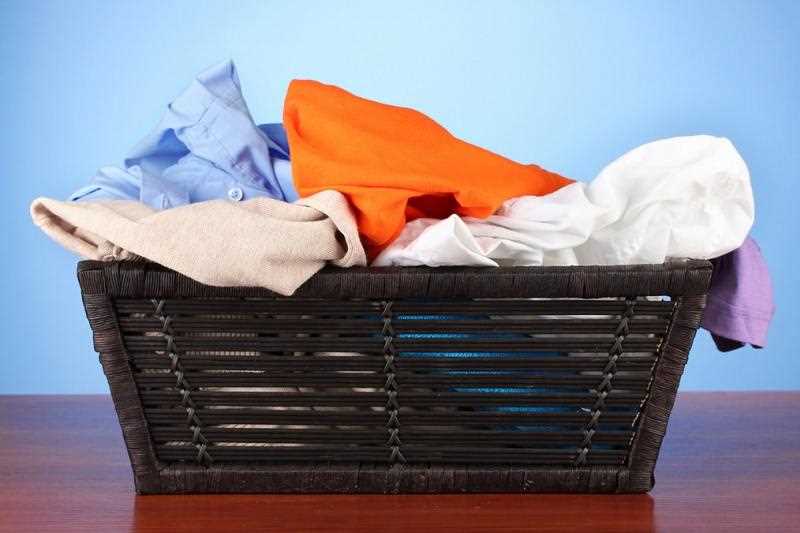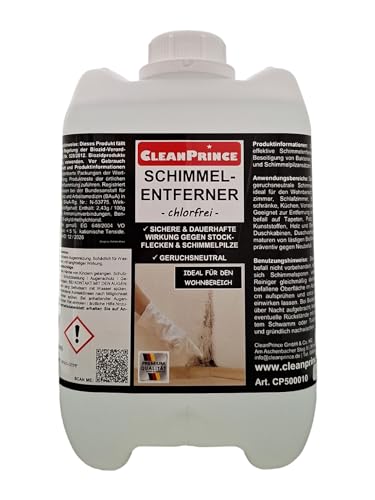




Having fresh, clean clothes is one of life’s little pleasures. There’s nothing quite like the feeling of putting on a freshly laundered garment that smells amazing and feels soft against your skin. But achieving that level of freshness can sometimes feel like a challenge. If you’re tired of your laundry coming out less than perfect, then you’ve come to the right place.
In this article, we’ll reveal the ultimate 17 secrets to achieving amazingly fresh laundry every time. From choosing the right detergent to mastering the art of stain removal, we’ve got you covered. So say goodbye to dingy, lackluster clothes and hello to a laundry routine that will leave your garments smelling and feeling fantastic.
Ready to transform your laundry game? Let’s dive in and unlock the secrets to achieving amazingly fresh laundry that will have you looking and feeling your best.
Secrets to Amazingly Fresh Laundry
Doing laundry can be a chore, but with these top secrets, you’ll be able to achieve amazingly fresh laundry every time.
1. Sort your laundry
Before starting the washing machine, sort your laundry by color and fabric type. This will prevent colors from bleeding and help keep your clothes looking vibrant.
2. Use the right amount of detergent

Follow the instructions on your detergent bottle to determine the correct amount to use for each load. Using too much detergent can leave your clothes feeling stiff, while using too little may not effectively remove dirt and stains.
3. Pre-treat stains
If you encounter tough stains, pre-treat them before washing. Apply a stain remover directly to the stain and let it sit for a few minutes before laundering as usual.
4. Wash in cold water
Washing in cold water not only saves energy but also helps preserve the colors of your clothes. Cold water is often sufficient to remove dirt and stains, so there’s no need to waste energy on hot water unless necessary.
5. Add baking soda
Add a scoop of baking soda to your laundry to naturally freshen your clothes and help remove odors. It also acts as a booster for your detergent, making it more effective.
6. Avoid overloading the machine
Overloading the washing machine can prevent clothes from being properly cleaned. Make sure there’s enough space for your laundry to move around freely and allow for proper agitation.
7. Use fabric softener sparingly
Fabric softener can leave a residue on your clothes, making them less absorbent. If you choose to use fabric softener, use it sparingly or opt for dryer sheets instead.
8. Dry clothes properly

When drying your clothes, separate delicate items from heavier ones and use the appropriate drying settings. Overdrying can damage fabrics and cause shrinkage, so always follow the care instructions on the garment tags.
9. Remove clothes promptly
As soon as your clothes are dry, promptly remove them from the dryer or clothesline to prevent wrinkles from setting in. Fold or hang them immediately for a neat and fresh appearance.
10. Air out your laundry

If possible, allow your laundry to air out outside before folding or storing. This will give them a natural, fresh scent and help remove any lingering odors.
11. Clean your washing machine
Regularly clean your washing machine to remove any buildup of detergent, dirt, or debris. Follow the manufacturer’s instructions to keep your machine running efficiently and your clothes smelling fresh.
12. Use vinegar as a fabric softener
Instead of using liquid fabric softener, add a small amount of white vinegar to the rinse cycle. Vinegar helps soften fabrics and remove detergent residue without leaving behind a strong scent.
13. Avoid over-washing

Washing clothes too frequently can cause them to wear out faster. Only wash items when they are truly dirty or have an odor, and try to rotate your wardrobe to extend the life of your clothes.
14. Hang clothes to dry
When possible, hang your clothes to dry instead of using the dryer. This not only saves energy but also helps prevent shrinkage and extends the life of your clothes.
15. Use a laundry bag for delicate items
To protect delicate fabrics from snags and tears, place them in a mesh laundry bag before washing. This will help preserve their quality and prevent damage.
16. Don’t neglect your laundry room
Keep your laundry room clean and organized. Regularly wipe down surfaces, clean the lint trap, and remove any stray fibers that may have accumulated. A tidy laundry room makes for a more pleasant laundry experience.
17. Implement a good laundry routine
Create a consistent laundry routine that works for you. Whether you prefer to do it all at once or tackle smaller loads throughout the week, having a routine will help you stay on top of your laundry and maintain fresh, clean clothes.
- Sort your laundry by color and fabric type
- Use the right amount of detergent
- Pre-treat stains
- Wash in cold water
- Add baking soda
- Avoid overloading the machine
- Use fabric softener sparingly
- Dry clothes properly
- Remove clothes promptly
- Air out your laundry
- Clean your washing machine
- Use vinegar as a fabric softener
- Avoid over-washing
- Hang clothes to dry
- Use a laundry bag for delicate items
- Don’t neglect your laundry room
- Implement a good laundry routine
Choose the Right Detergent for Your Needs
1. Consider the Type of Fabric
When selecting a detergent, it’s important to consider the type of fabric you will be washing. Different fabrics require different types of detergents to effectively remove stains and maintain their quality.
2. Check for Speciality Detergents
If you have specific needs, such as sensitive skin or allergies, look for speciality detergents that are designed to cater to those requirements. These detergents are formulated to be gentler on the skin and more suitable for people with hypersensitivity.
3. Choose between Powder and Liquid Detergents
Both powder and liquid detergents have their advantages. Powder detergents are typically more effective at removing tough stains, while liquid detergents are great for pre-treating stains or for use in cold water washes.
4. Consider Environmentally Friendly Options

If you’re conscious about the environmental impact of your laundry products, consider choosing detergent brands that offer environmentally friendly options. These detergents are usually biodegradable, phosphate-free, and made from natural ingredients.
5. Look for Stain-Fighting Formulas

If you frequently deal with stubborn stains, look for detergents that have specific stain-fighting formulas. These detergents are designed to target and remove different types of stains, such as grass, wine, or grease.
6. Compare Prices
Detergents come in a wide range of prices, so be sure to compare prices and consider your budget when choosing a detergent. Keep in mind that more expensive detergents don’t always guarantee better performance.
7. Read Customer Reviews
Before making your final decision, read customer reviews of different detergent brands. These reviews can provide valuable insights into the effectiveness and quality of the detergent and help you make an informed choice.
| Features | Price | Customer Rating | |
|---|---|---|---|
| Brand A | Stain-fighting formula, suitable for all fabrics | $10.99 | 4.5/5 |
| Brand B | Hypoallergenic, eco-friendly, biodegradable | $12.99 | 4/5 |
| Brand C | Powerful stain removal, suitable for cold water washes | $8.99 | 4.2/5 |
By considering these factors and doing some research, you can choose the right detergent that meets your needs and helps you achieve amazingly fresh laundry every time.
Sort Your Laundry Properly
Sorting your laundry is an essential step to ensure clean and fresh clothes. By separating your laundry based on different factors, you will be able to optimize your washing process and maintain the quality and longevity of your garments. Here are some key factors to consider when sorting your laundry:
1. Color
Separate your laundry into dark and light colors. Washing dark and light clothes together can result in color bleeding, causing your light-colored garments to become dull or stained. If possible, further divide your laundry into whites, light pastels, and bright colors to prevent any potential color transfer.
2. Fabric Type
Sorting your laundry based on fabric type is crucial to protect delicate fabrics and ensure they receive proper care. Separate fabrics such as cotton, linen, or denim from delicate items like silk, lace, or wool. Delicate fabrics require a gentler washing cycle to prevent damage.
3. Level of Soiling
If your laundry consists of items with heavy stains or dirt, it is recommended to wash them separately. This allows for a more effective cleaning process, as heavily soiled items may require a longer washing time or a specific stain removal treatment.
4. Special Care Instructions
Some garments might have specific care instructions, such as hand-washing only or dry cleaning. These items should be sorted separately to ensure they receive the appropriate washing method and avoid potential damage.
5. Size and Weight
Large and heavyweight items, such as bedding or towels, can be sorted separately from smaller and lighter garments. Washing heavy items with lighter ones can cause unbalanced loads and affect the washing machine’s efficiency.
By following these sorting guidelines, you can achieve cleaner and fresher laundry while prolonging the life of your clothes. It may require a little extra effort, but the results will be well worth it.
Pre-Treat Stains Before Washing
Stains on your clothes can be a real headache, but with a little pre-treatment, you can remove them easily before washing. Here are some tips to help you effectively pre-treat stains:
1. Act quickly
The key to successful stain removal is to act quickly. The longer a stain sits on the fabric, the harder it will be to remove it.
2. Identify the stain
Before treating a stain, it’s important to identify the type of stain you’re dealing with. Different stains require different treatment methods.
3. Read the garment’s care label
Check the care label on your garment to see if there are any specific instructions or warnings for stain removal. Follow the manufacturer’s recommendations to avoid damaging your clothes.
4. Test the treatment method
Before applying any stain remover or detergent, it’s a good idea to test it on a small, inconspicuous area of the fabric to ensure it doesn’t cause any discoloration or damage.
5. Use the right pre-treatment product
There are a variety of pre-treatment products available, such as stain sticks, sprays, or gels. Choose the one that is best suited for the type of stain you have.
6. Follow the instructions
Each pre-treatment product will have specific instructions on how to use it. Follow these instructions carefully to achieve the best results.
7. Apply the pre-treatment product
Apply the pre-treatment product directly to the stain, making sure to cover the entire affected area. Use a soft brush or your fingers to gently work the product into the fabric.
8. Let it sit
Allow the pre-treatment product to sit on the stain for the recommended amount of time. This will give it a chance to penetrate the fabric and break down the stain.
9. Check for colorfastness
After the recommended time has passed, check the fabric to ensure that the pre-treatment product hasn’t caused any color fading or bleeding. If there are no negative effects, proceed to the next step.
10. Launder as usual
Once you’ve pre-treated the stain, wash your garment as you normally would. Follow the care instructions on the label and use the appropriate water temperature and detergent.
11. Inspect the stain
After washing, inspect the fabric to see if the stain has been completely removed. If there is still a faint stain remaining, you may need to repeat the pre-treatment process or try a different method.
12. Air dry
Instead of using a dryer, air dry your garment to avoid setting any residual stains. Hanging it outside or using a drying rack indoors will help the fabric retain its freshness.
By following these pre-treatment tips, you’ll be able to remove stubborn stains and keep your laundry looking fresh and clean.
Use the Correct Water Temperature
Choosing the right water temperature is crucial for achieving fresh and clean laundry. Different fabrics and stains require different water temperatures to effectively remove dirt and grime. Here are some guidelines on using the correct water temperature:
- Hot water: Use hot water for heavily soiled items and whites. Hot water can help to kill bacteria and remove tough stains.
- Warm water: Most laundry can be washed in warm water. Warm water is effective in removing dirt and stains without damaging delicate fabrics.
- Cold water: Cold water is best for bright or dark-colored items, as it helps to prevent color fading. It is also suitable for delicate fabrics that may shrink or get damaged in hot or warm water.
It’s important to note that not all stains can be removed with water alone. For stubborn stains, pretreating with a stain remover or soaking the garment in a detergent solution before washing can help enhance their removal.
Remember to always check the care labels on your clothes for specific instructions regarding water temperature. Some items may require a specific water temperature or recommend hand washing only.
| Water Temperature | Best For |
|---|---|
| Hot | Heavily soiled items, white fabrics, towels, bed sheets |
| Warm | Most laundry, including colored fabrics and everyday clothes |
| Cold | Bright or dark-colored fabrics, delicate items, clothes that may shrink |
By using the correct water temperature, you can ensure that your laundry comes out fresh, clean, and in the best condition possible.
Ensure Proper Drying and Storage
- Air Dry: Whenever possible, air dry your laundry instead of using a dryer. Hang your clothes on a clothesline or drying rack to prevent shrinking and damage caused by high heat.
- Separate Delicate Items: Separate delicate items, such as lingerie or fine knitwear, from heavier items to avoid stretching or tearing.
- Read Labels: Always read the care labels on your clothes to determine the recommended drying method. Some items may require air drying, while others can safely be put in the dryer.
- Use Low Heat: If you use a dryer, set it to a low heat setting to prevent excessive shrinkage and damage to your clothes.
- Remove Promptly: Remove your clothes from the dryer as soon as the cycle is finished to prevent wrinkles from setting in.
- Sort by Type: Sort your clothes by type before storing them. Keep separate piles for t-shirts, pants, dresses, etc. This will make it easier to find what you need later on.
- Fold Properly: Fold your clothes neatly to avoid creasing and wrinkling. Invest in folding boards or use the KonMari method for efficient folding.
- Hang Delicate Items: Hang delicate items, such as dresses or blouses, to prevent them from getting crushed or wrinkled in storage.
- Use Moth Repellent: Place moth repellent sachets or cedar balls in your storage area to prevent moth damage to your clothes, especially if you live in a humid climate.
- Keep Storage Area Clean: Clean your storage area regularly to prevent dust and dirt from settling on your clothes.
- Use Vacuum Bags: Consider using vacuum bags to save space and protect your clothes from dust and moisture. These bags compress your clothes and create an airtight seal.
- Rotate Seasonal Items: Rotate your clothes seasonally to ensure that all items get equal wear and prevent moths or other pests from damaging them.
- Label Storage Bins: Label your storage bins or containers to easily identify what’s inside. This will save you time when searching for specific items.
- Store Shoes Properly: Store shoes separately from clothes to prevent them from causing damage. Use shoe racks or shoe boxes to protect them from dust and moisture.
- Utilize Drawer Organizers: Utilize drawer organizers to keep your drawers tidy and prevent clothes from getting mixed up or wrinkled.
- Use Fabric Fresheners: Use fabric fresheners or scented sachets to keep your clothes smelling fresh while in storage.
FAQ
How can I make my laundry smell fresh?
You can make your laundry smell fresh by adding a few drops of essential oil to your washing machine or dryer. You can also use scented laundry detergent or fabric softener to achieve a fresh scent.
What can I do to remove tough stains from my clothes?
To remove tough stains from your clothes, you can pretreat the stains with a stain remover or a mixture of vinegar and water. You can also soak the stained clothes in a solution of detergent and water before washing them.
What is the best way to prevent clothes from shrinking?
The best way to prevent clothes from shrinking is to follow the care instructions on the garment’s label. Avoid washing clothes in hot water and opt for a gentle cycle. You can also air dry your clothes instead of using a dryer.
How often should I wash my towels?
It is recommended to wash towels every three to four uses or once a week. Washing them frequently helps to keep them clean and fresh.
What can I do to prevent my white clothes from turning yellow?
To prevent white clothes from turning yellow, you can use a whitening detergent or add half a cup of lemon juice to the wash cycle. Another tip is to separate white clothes from coloured clothes to avoid colour bleeding.
What are some effective ways to keep my laundry smelling fresh?
There are several effective ways to keep your laundry smelling fresh. Firstly, make sure to promptly remove your laundry from the washing machine after the cycle is complete to prevent any musty odours from developing. Additionally, you can add a scented fabric softener or dryer sheet to your laundry, or try using specialised laundry detergents that are designed to leave a long-lasting scent. Another tip is to sun-dry your laundry, as the sun’s rays can naturally help eliminate odours and leave your clothes smelling fresher.
How can I remove tough stains from my clothes?
If you have tough stains on your clothes, there are a few methods you can try to remove them. Firstly, you can pre-treat the stain by applying a stain remover directly to the affected area and allowing it to sit for a few minutes before washing. Another option is to soak the stained garment in a mixture of water and detergent for a few hours or overnight, which can help loosen the stain before washing. For particularly stubborn stains, you can also try using a combination of baking soda and vinegar, or even hydrogen peroxide, as these can help break down the stain’s molecules and make it easier to remove.














